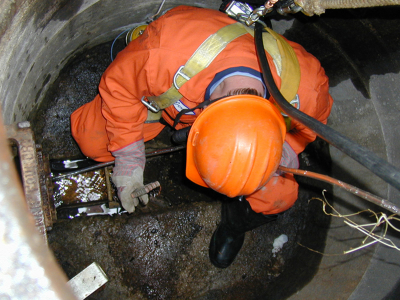Drainage is an important part of ensuring your home functions correctly, although there are many that are unable to correctly determine signs of drainage problems. That’s why we have answered some frequently asked drainage questions below.

1. What drains are the property owners responsibility?
If you have a blocked drain and it is on your property, then it is your responsibility to have this cleared. However, once the drain system leaves the customers property and enters the public sewers it is then the responsibility of the Local Water Authority. Therefore, if it is not on your boundary it is then the council’s problem to resolve.
2. What are the different methods of drain clearing?
- Rodding: This technique involves passing rods through the drainage system. The rods have brushes affixed at the end of the rod. The rod then passes through the system, dislodging the blockage which is dispersed throughout the system, so the flow of water is restored.
- Jetting: All able group drainage vehicles are fitted with high pressure water jetting equipment. When jetting, highly pressurised water passes through the jetting hose and through the drainage system, dislodging any obstructions and restoring the flow of water.
- Chemicals: Corrosive chemicals are flushed through the drainage system, breaking down that can then be flushed with the normal flow of water.
3. What does a CCTV Survey consist of?
During a CCTV Survey a camera is passed down the drain, recording the results onto a portable recording unit. A DVD copy of these results will then be supplied to the customer, with a full report of recommendations, including:
- Where there is a recurring blockage
- The condition of the drains or pipework within a property
- Any underlying problems within the drainage system
- Any collapsed, cracked or displaced joints
- If tree roots are growing into the drainage system
4. What is Drain Realignment?
A CCTV Survey may show various underlying problems that can only be dealt with by excavating the drainage system – this is drain realignment. The only way to identify if a drain realignment is necessary is to carry out a CCTV Survey beforehand.
5. What is a Septic Tank/Cess Pit?
Both Septic Tanks and Cess Pits are waste storage systems used for properties that are not plumbed into the sewage network. These systems store waste products that would normally be flushed into large tanks, which are then pumped into tankers and collected for disposal.
6. What are Soak Aways?
This is applied to properties with poor drainage. Areas of earth are dug up and filled with rubble. This creates a system whereby rain water will drain away more easily. Unfortunately, because of the nature of soak aways, there is very little that can be done to deal with any related problem.
It is always important to note that you should always use a reputable drainage engineer for any drainage problem, big or small.




